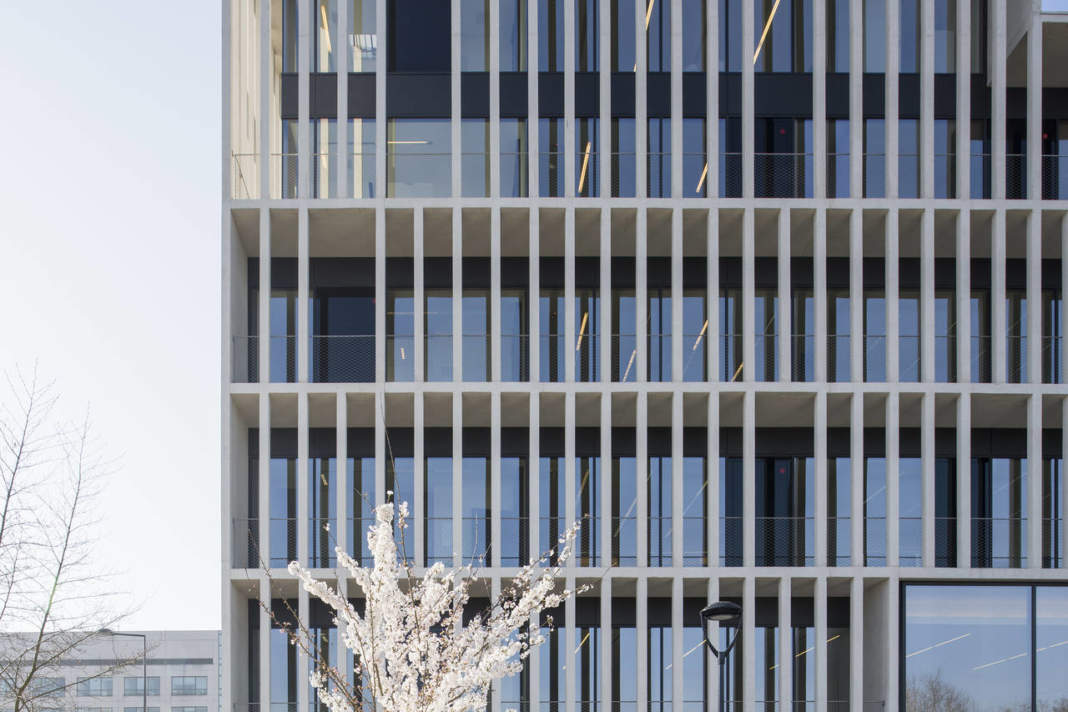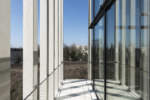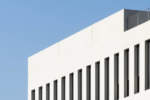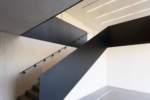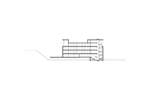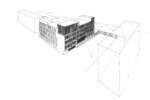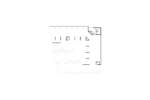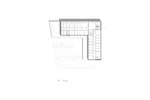architect: Stefano Sbarbati, Piuarch e Incet ingegneria
location: Champigny, Paris, France
year: 2017
At the end of January 2017, the employees of the group IDF Habitat moved into their new headquarters constructed at 59 Avenue Carnot in Champigny-sur-Marne, in the joint development zone of the Bords de Marne. The new urbanization project, developed by Sadev94, sees the transformation of a vast area in the heart of the Champigny-sur-Marne region, which consists of a landlocked zone between the imposing Air Liquide building and the slope of a railway line. The parcel of land faces a forecourt planned in the center of the joint development zone, at the western end of Avenue Carnot. The architects Stefano Sbarbati, Piuarch e Incet ingegneria responded to the challenge of conceiving an efficient building to house the offices of IDF Habitat, while developing the outline the forecourt as a public space, which lies to the north of the parcel. The project lies along the northern and eastern boundaries of the parcel of land. This position permits a direct interaction between the building and its urban surrounds, and frees the heart of the parcel for the creation of a landscaped area. The building fits in this context with a structure solidly anchored in the ground, and which adapts its facades according to exposure and relationship to its surrounds. The ground floor functions as a screen which conceals the area of shady area of the piles, without obstructing waters in the event of a flood. This responds to the requirements of the Plan for Prevention of Flood Risks which applies in the area around the Marne river, while clearly defining the limits of the public space.
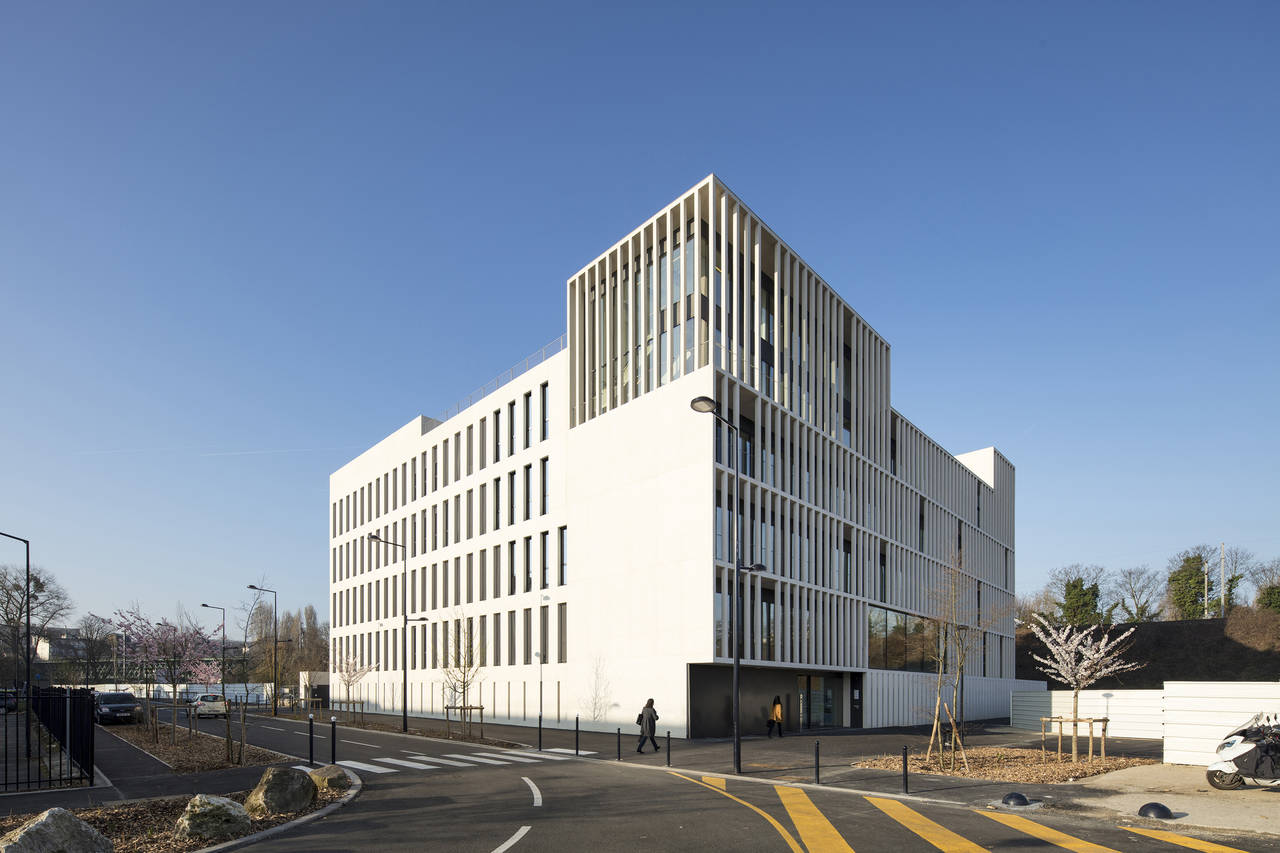
On the higher floors, the distinction between the façades is accentuated:
- In the eastern, southern and western façades, the sunrays and proximity to the banks of the railway line mean the interiors need to be protected, using a series of uniform permeations in the façade.
- In the north, a continuity is created between the private and public spaces by opening the façade and creating a loggia facing the forecourt.
The intention is to create a link between the users of the building and the public, between interior and exterior, through the use of the loggia as an intermediate indoor-outdoor space. The spaces that face the forecourt need to respect its spirit. For this reason, the entry hall and the primary stairwell, as well as the meeting rooms, training area, double-height boardroom and rooftop terrace communal space, are all positioned in this area. From the forecourt, the entry into the headquarters is through an open stairway leading to the reception area, which guides and controls the flow of those coming into the building. A glass façade opens the totality of the building to the outside, creating a direct link with the urban public space. From the first-floor entry hall, a glass-enclosed stairwell gives access to all levels of the building, and looks onto the forecourt. At each level, the stairway and the elevator open onto communal area that looks over the public space outside. From this intersecting point in the building, two wings stretch outwards to the south and the west, distributing the different departments of IDF Habitat, while leaving the possibility to divide the building into independent spaces. On the top floor, a communal space gives access to the rooftop terrace garden and offers a place of retreat for the building’s users. In the centre of the land parcel, the garden is landscaped in order to create a continuity between the building’s property and the SNCF train line, enhancing the green area which cuts through the urban landscape. Vehicle access and deliveries are made from the street which runs the length of the eastern boundary, freeing the main façade and public space for use by pedestrians.
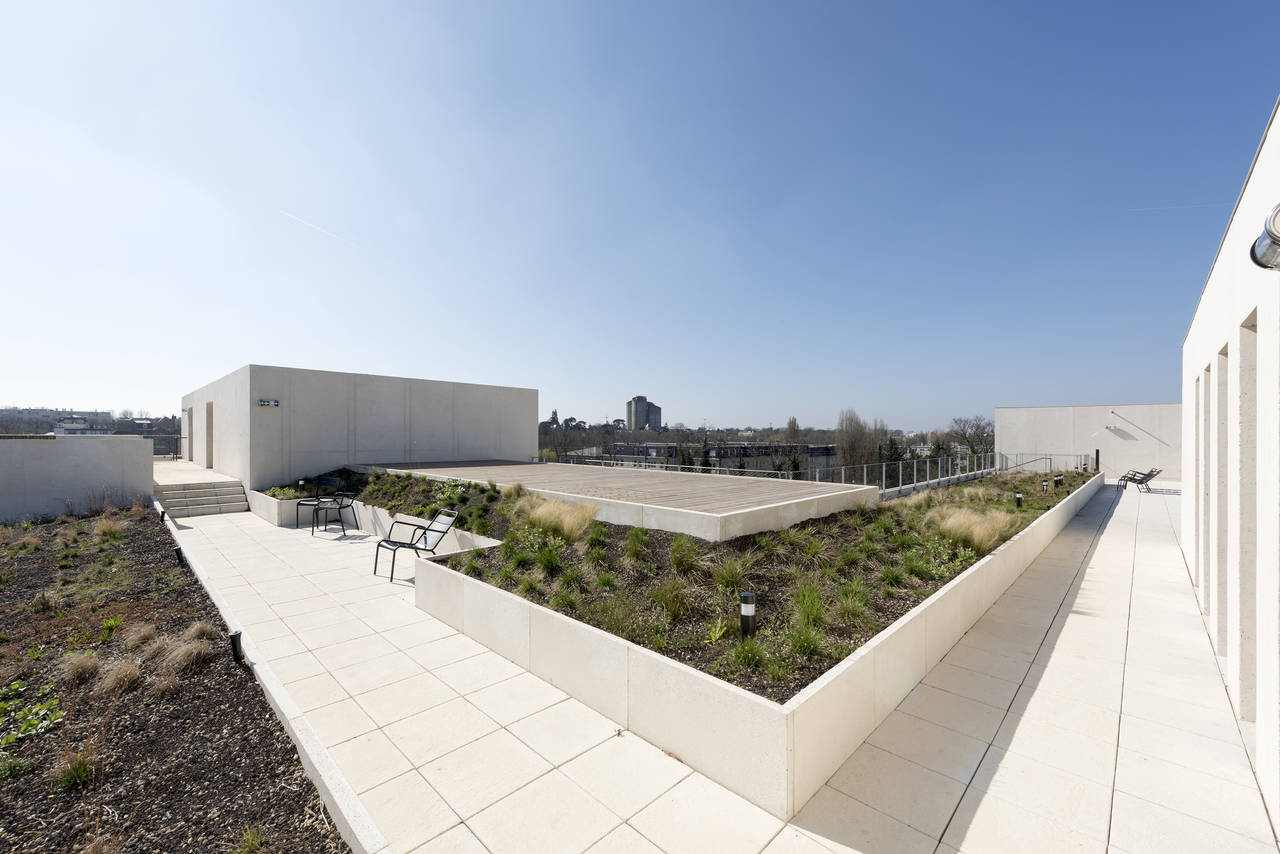
The building is conceived as a structural envelope which protects the interior space while freeing it of constraints. The load-bearing façades cast on-site are indicative of the modular principle developed in the project. The frame (0.675m) structures the whole building; the sides that are exposed to the sun adopt a façade that uniformly alternate solid modules and voids; while on the north side the concrete mass is reduced to a minimum by aligning columns at the intersection of the axes of the frame. The prefabricated alveolar slabs stretch between the facades without intermediate supporting points (a 13m range). The distribution of networks respects the principle of freeing the interior spaces from all constraints. From the technical control centre located on the roof, vertical pipes transverse all the floors at the intersection of the two wings. On each floor, the networks are distributed throughout the building form the core, and are accessible via a raised floor. The networks having been installed under the floor, the ceilings are constructed of irremovable acoustic plasterboards. These are uniformly developed throughout all floors, providing a clear height of 2.7m in all spaces. The project guarantees flexibility in the interior layout through an interchangeability which allows for future adaptation as offices, a public facility or even residences. Modularity and flexibility give the offices a special quality. The distribution and layout of workspaces can be easily modified, without necessitating intervention in the structure or the networks, which are developed based on the most unfavourable scenario. The distribution of networks in the raised floor facilitates the maintenance of installations and permits the positioning of workspaces at all points of the building, creating an ergonomic working environment. The regular pattern of openings to the outside offers uniform lighting throughout the interior spaces, consistent with the exposure of the facades. The standardization of equipment and construction solutions reduces the cost of construction and maintenance. The materials promote a certain sobriety and give durability to the building. The choice of materials is restrained: light colored, sanded concrete is used for the structural facades and the hall; a powder coated aluminum is used for the windows and bay windows; rubber is used for the floors and a Venetian style “terrazzo” in a black marble base in the entrance hall. The technique used for the execution of the concrete was chosen for the quality of its finish, its durability and ease of implementation. The concrete is created using a base of white cement and local aggregates. Once removed after drying, the concrete is sanded using a diamond disc. This reveals the texture of the materials and softens the traces of the construction process, while conserving the smooth surface. All of the facades are treated using a colourless waterproofer to guarantee the durability of the rendering.
technical information
client: IDF Habitat
architect - group leader: Stefano Sbarbati
associate architect: Piuarch
technical feasibility study: Incetingénierie
enterprise: Colas Bâtiment
project: construction of an office building. 57 covered parking spaces. Depollution of the land and groundwater.
building surface: 3,000 sqm
construction budget (excluding tax): EUR 7.1 million, excluding depollution
delivery: January 2017
address: 59, avenue Carnot, Champigny-sur-Marne
construction: Colas Bâtiment
photography: Martin Argyroglo


